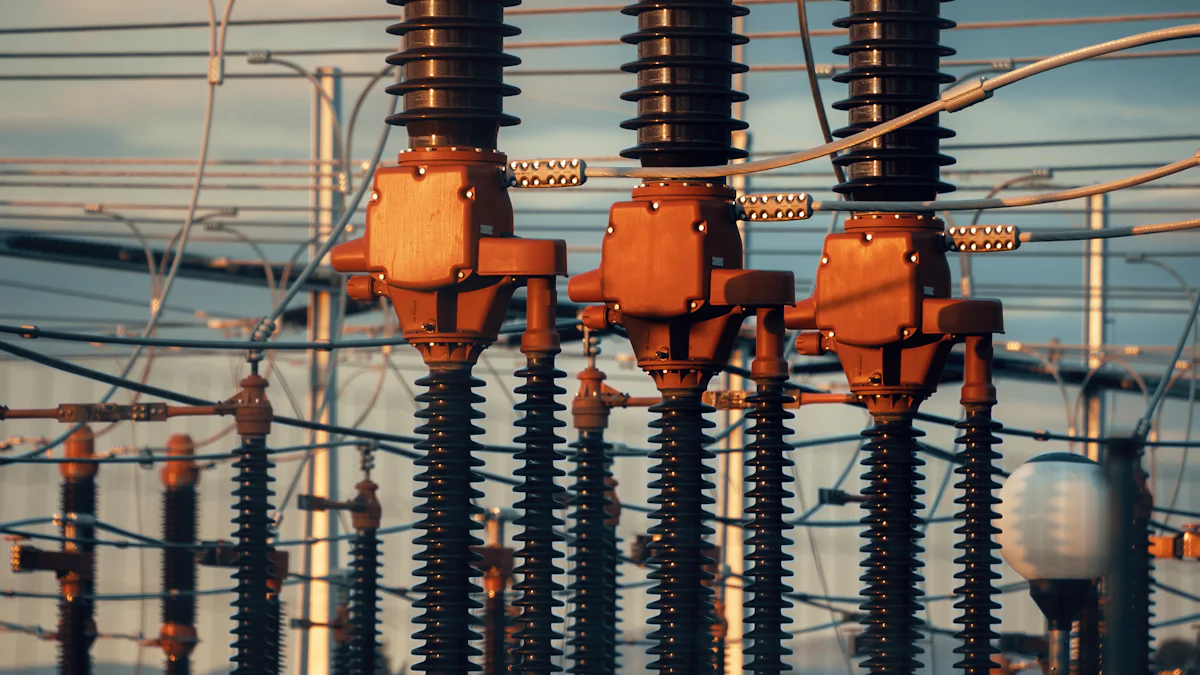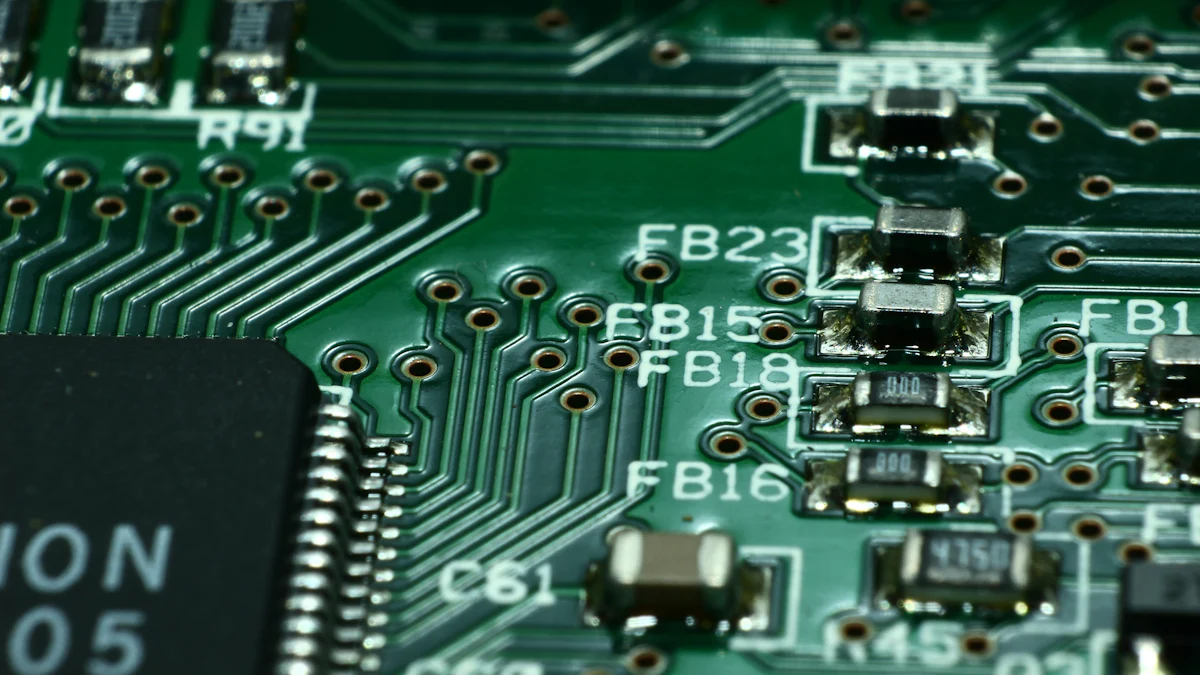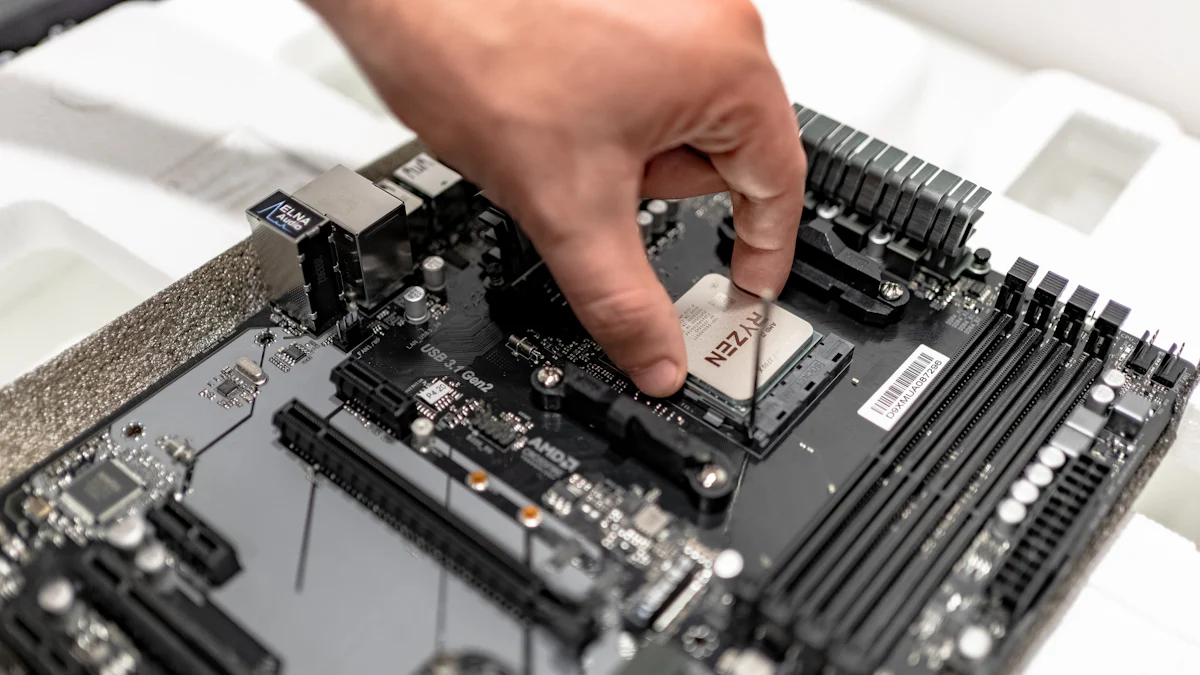Voltage Regulator Modules Explained: Factors That Matter

A voltage regulator module keeps voltage steady for devices. It protects them from changes in power levels. Without it, devices might have flickering screens or wrong readings. Sometimes, they might even stop working. These issues can make devices less reliable. VRMs help devices work smoothly and correctly. They are very important for modern technology. By controlling voltage well, VRMs protect delicate parts and help devices last longer.
Key Takeaways
A voltage regulator module (VRM) keeps power levels steady.
VRMs lower high power to safe levels for CPUs and GPUs.
Stable power stops overheating and keeps devices working well.
VRMs are used in computers, phones, and servers for smooth running.
Picking a VRM means checking power levels, current, and efficiency.
Efficient VRMs save energy, stay cool, and make batteries last longer.
Testing a VRM checks if it stays stable and handles heat well.
Knowing linear and switching VRMs helps pick the right one for your device.
What Is a Voltage Regulator Module?

Definition and Purpose
A voltage regulator module (VRM) is a small, important part of electronics. It changes higher voltages, like 12V or 5V, into lower ones. These lower voltages, often under 1.5V, are needed by parts like CPUs and GPUs. These parts need steady and exact power to work well. A VRM keeps the voltage stable and reduces noise. This helps devices work better and last longer.
You can think of a VRM as a power manager for your device. It gives each part the exact voltage it needs, even if power use changes. This protects sensitive parts and saves energy by cutting down on wasted power.
Importance in Electronic Devices
VRMs are very important for how devices work. They give the right voltage to parts like processors and chips. This lets parts with different voltage needs work together on the same board. For example, a VRM can turn 12V into the voltage a CPU needs to run smoothly.
Without a VRM, devices could overheat, stop working, or get damaged. VRMs also adjust quickly when power needs change. This keeps devices running well, especially in systems that need a lot of power.
Applications in Modern Technology
VRMs are used in many modern devices. In computers, they power CPUs and GPUs by lowering high voltages. This keeps devices stable, even during hard tasks like gaming or editing videos. VRMs are also key for overclocking, giving steady power for extra performance.
VRMs are also in laptops, phones, and servers. They save energy when devices are not in use. Networking tools like routers and switches also depend on VRMs to work reliably. By helping devices use power better, VRMs support the growth of modern technology.
How Voltage Regulator Modules Work
Key Components
Voltage regulator modules use several parts to keep voltage steady. Each part has a job to make sure your device gets the right power.
Component | What It Does |
|---|---|
Controllers | The "brain" that checks and adjusts the voltage constantly. |
Capacitors | Store and release energy quickly to keep voltage stable. |
Inductors | Use magnetic fields to smooth out power changes and noise. |
Power Stage | Where voltage is changed using switches like MOSFETs and diodes. |
Feedback Circuit | Sends voltage info back to the controller for accurate adjustments. |
Capacitors
Capacitors hold electrical energy and release it when needed. They act like cushions, softening sudden voltage changes. This keeps your device powered smoothly, even when power needs shift quickly. Without them, voltage spikes could harm delicate parts.
Inductors
Inductors work with capacitors to keep voltage steady. They store energy in magnetic fields and release it slowly. This helps remove noise and smooth out power. Inductors are very important for devices that need stable power, like high-performance gadgets.
Control Circuitry
Control circuitry includes controllers and feedback circuits. It acts like the VRM's control center. It watches the voltage and adjusts it as needed. This ensures your device gets the exact power it requires. It also stops too much or too little voltage, protecting your device from harm.
Operational Principles
Voltage regulator modules follow certain rules to change and stabilize voltage. These rules help your device get dependable power.
Voltage Conversion
VRMs lower high voltage to the level your device needs. This process is called buck conversion. For example, they might turn 12V into 1.2V for a CPU. This happens in the power stage, where switches and diodes work together. The result is steady power that matches your device's needs.
Feedback Mechanisms
Feedback systems are key to keeping voltage stable. The feedback circuit checks the output voltage and tells the controller. If the voltage is off, the controller fixes it right away. This system keeps power steady, even when demands change suddenly. Capacitors and inductors also help by filtering out bumps in the power.
By using these parts and methods, VRMs give your devices the reliable power they need to work well.
Factors Affecting VRM Performance
Voltage Regulation
Keeping Voltage Stable
Voltage regulation keeps the output voltage steady. This happens even if input voltage or device power needs change. A VRM manages different input voltages while keeping the output constant. Several things affect this stability:
How well the VRM handles changing input voltages.
The amount of current your device needs to work.
Quick response to sudden changes in power demand.
Good heat control to stop overheating.
When these factors work together, your device runs smoothly and safely.
Problems with Bad Regulation
Bad voltage regulation can harm your device. Picking the wrong VRM can waste power and make devices less reliable. Too much heat can damage parts and drain the battery.
Problem | What Happens |
|---|---|
Overheating | |
Unstable Output | Low input voltage can lead to unstable output, risking damage. |
Lower Reliability | Poor regulation uses more power and reduces device reliability. |
Good voltage regulation protects your device and helps it work better.
Load Capacity
Handling Power and Current
Load capacity is how much power and current a VRM can handle. Devices need specific power levels to work properly. The VRM must meet these needs without failing. If the VRM can't provide enough power, the device may not work well. A strong VRM gives the right power, even during heavy use.
Dangers of Overloading
Overloading happens when the VRM tries to give more power than it can. This can cause overheating, lower efficiency, or permanent damage. To avoid this, pick a VRM that can handle your device's power needs.
Transient Response
What It Is and Why It Matters
Transient response shows how fast a VRM adjusts to sudden power changes. For example, when a CPU goes from idle to full use, the VRM must quickly adjust. A good transient response keeps the device stable during these changes.
How It Affects Devices
Several things affect a VRM's transient response:
How fast it reacts to sudden power changes.
The output capacitance, which smooths out voltage changes.
The speed of adjusting to new conditions.
A quick transient response keeps devices stable during power changes. Without it, voltage spikes or drops can harm the device or stop it from working.
Knowing these factors helps you pick the best VRM for your device. This ensures it works efficiently, stays stable, and lasts longer.
Thermal Management
Ways to Handle Heat
VRMs create heat while they work. This happens because some energy is lost as heat when they change voltage and give power to devices. Good heat control keeps the VRM working well and safely. If heat isn’t managed, the VRM can get too hot. This can make it less efficient or even damage it.
There are different ways to manage heat in VRMs. Heat sinks are common tools. These metal parts take in heat from the VRM and let it out into the air. Fans are often added to heat sinks to move air and cool the VRM faster. In small devices, engineers use special pads or materials to move heat to the device’s case, which spreads the heat out. For very powerful systems, liquid cooling might be used to handle heat better.
Effects of Overheating
Too much heat can hurt how your device works. If a VRM gets too hot, it might lower its power to avoid damage. This can slow down your device or make it act strangely. Over time, overheating can wear out the VRM’s parts, making it stop working sooner.
To prevent these problems, pick a VRM with good heat control. Look for designs that include tools like heat sinks or fans. Make sure your device has good airflow to keep temperatures low. By controlling heat well, your VRM will work better and last longer.
Efficiency
Energy Losses
Efficiency shows how well a VRM turns input power into usable power. Any power not used becomes heat. How much energy is lost depends on the VRM’s design and the power it handles. When handling light power loads, efficiency can range from 15% to 99%. But most modern VRMs work more efficiently when the load is over 300mA.
Better efficiency means less wasted energy, which creates less heat. This is very important for portable devices since wasted energy drains the battery faster. Choosing a VRM with high efficiency helps your device run longer and stay cooler.
Finding the Right Balance
It’s important to balance efficiency and performance when picking a VRM. Efficiency can change depending on how much power the VRM is handling. Companies usually show efficiency at maximum power, but real use might be different. Testing the VRM in real conditions helps you see if it’s right for your device.
Engineers design VRMs to balance efficiency and performance. They improve control systems to reduce energy loss while keeping the VRM stable. They also pick parts like capacitors and inductors that work well across different power levels. By knowing these details, you can choose a VRM that fits your device’s needs without losing reliability or heat control.
Efficient VRMs save energy, improve performance, and help devices last longer.
Types of Voltage Regulator Modules

Voltage regulator modules are of two main types: linear and switching. Each type has its own features and uses. Knowing these differences helps you pick the right one for your device.
Linear Voltage Regulators
How They Work and Where They’re Used
Linear voltage regulators keep output voltage steady by turning extra voltage into heat. They are simple and dependable. These regulators are great for devices that need very low noise.
You can find linear regulators in car systems like infotainment screens and engine controls. They are also used in battery systems to balance voltage and stop overcharging. Their easy design makes them a favorite for delicate electronics.
Advantages and Disadvantages
Linear regulators have some good points:
Easy to use with few parts.
Produce very little electrical noise, perfect for sensitive devices.
But they also have downsides:
Not very efficient, especially with big input-output voltage differences.
Create a lot of heat, which might need extra cooling.
Feature | Linear Voltage Regulators |
|---|---|
Efficiency | Low, especially with large voltage differences |
Heat Generation | Turns extra voltage into heat |
Noise | Very low, good for sensitive devices |
Complexity | Simple, needs few parts |
Linear regulators are best for low-power devices where efficiency isn’t a big concern.
Switching Voltage Regulators
How They Work and Where They’re Used
Switching voltage regulators work by quickly turning on and off to control power. This makes them more efficient, especially with big input-output voltage differences.
These regulators are flexible and used in many devices. For example:
Type | What It Does | Where It’s Used |
|---|---|---|
Buck Converter | Lowers voltage | Digital circuit power supplies |
Boost Converter | Raises voltage | Battery devices needing higher voltage |
Buck-Boost Converter | Raises or lowers voltage | Systems needing flexible voltage levels |
Inverter | Changes DC to AC | Motor drives, AC power supplies |
Switching regulators are common in gadgets needing high efficiency, like laptops, phones, and digital power supplies.
Advantages and Disadvantages
Switching regulators have many benefits:
Very efficient, even with big input-output voltage differences.
Small and lightweight, great for compact devices.
Can be used in many different applications.
But they also have some drawbacks:
Can create electrical noise because of their switching.
Need a more complex design, which can cost more.
Advantages | Disadvantages |
|---|---|
Very efficient | Can raise system cost |
Useful for many applications | Needs complex design |
Small and lightweight | Can cause electrical noise |
Switching regulators are ideal for devices needing efficiency and small size. But you’ll need to handle possible noise and design challenges.
Picking between linear and switching regulators depends on your device’s needs. Linear regulators are great for low-noise, low-power uses. Switching regulators are better for high-efficiency, high-power situations.
Design Considerations for VRMs
Picking the Right VRM
Choosing the best VRM needs careful thought about key factors. First, check the input and output voltage your device needs. Make sure the VRM matches these voltage levels to work properly. Next, think about how much current your device will use. The VRM must handle the highest current without overheating or breaking.
Efficiency is very important too. A good VRM wastes less power and makes less heat. This is crucial for devices like phones or tablets. Also, look at the dropout voltage. This is the smallest gap between input and output voltage the VRM can keep. A low dropout voltage is great for battery-powered devices.
If your device has sensitive parts, like audio systems, pick a VRM that reduces noise well. Lastly, check how fast the VRM adjusts to power changes. Devices like processors need VRMs that react quickly to keep power steady.
Balancing Cost and Features
When picking a VRM, balance cost with what your device needs. High-quality VRMs often have better efficiency, faster response, and good heat control. But these features can make them more expensive.
Decide which features matter most for your device. For example, if your device gets hot or uses a lot of power, spend more on a VRM with strong heat control and efficiency. For simpler devices, a cheaper VRM might be enough.
Think about the size of your device too. Small gadgets may need tiny, pricier VRMs. Bigger devices can use larger, cheaper ones. By focusing on your device’s needs, you can find the right mix of cost and performance.
Testing and Checking
Testing your VRM makes sure it works well in real life. Start by checking the dropout voltage to see if it stays steady with low input power. Look at the ripple, which is small changes in output voltage. Too much ripple can mess up sensitive parts.
Test how fast the VRM reacts to sudden power changes. This is important for devices with changing power needs. Check efficiency to see how much power is used versus wasted as heat. Use tools like oscilloscopes to measure ripple and response time. Multimeters can check steady voltage and current, while signal generators test different input conditions.
Finally, test how well the VRM handles heat. Make sure it stays cool even when working hard. By testing carefully, you can trust your VRM to keep your device running smoothly.
A voltage regulator module (VRM) is key to keeping devices steady and working well. It controls voltage, handles power needs, adjusts quickly, manages heat, and saves energy. Picking the right VRM means checking its features carefully. Comparing choices with accurate details helps match the VRM to your device. Choosing the wrong one can cause expensive fixes, delays, or higher costs. Knowing these factors helps make devices more reliable and work better in different tasks.
FAQ
What does a VRM do?
A VRM gives your device the right, steady voltage it needs. It protects delicate parts from power changes and boosts performance.
How can I pick the best VRM for my device?
Find out your device's voltage and power needs. Choose a VRM with good efficiency, cooling, and quick power adjustment. Make sure it fits your device's size and energy use.
Why is VRM efficiency important?
Efficiency stops energy waste and keeps devices cooler. It also saves battery life in portable gadgets. Efficient VRMs make devices work better and last longer.
Can a VRM get too hot? What happens then?
Yes, VRMs can overheat if overworked or not cooled well. Overheating can slow performance, cause problems, or damage the VRM and device.
How are linear and switching VRMs different?
Linear VRMs are simple and quiet but waste more energy. Switching VRMs save energy and are flexible but may cause electrical noise. Pick one based on your device's needs.
Why does transient response matter for devices?
Transient response shows how fast a VRM adjusts to power changes. A quick response keeps devices steady during demanding tasks, avoiding power drops or spikes.
Are VRMs used in all electronics?
Yes, VRMs are in many devices like computers, phones, and servers. They provide stable power for processors, GPUs, and other parts needing specific voltages.
How do I check if a VRM works well?
Use tools like multimeters and oscilloscopes to test voltage, ripple, and efficiency. Check how it handles sudden power changes and heat in real situations.
Tip: Always follow the maker's instructions when testing VRMs to avoid damage.
See Also
Essential Differences Between CR1620 and CR2032 Batteries
Understanding The Roles Of Circuit Board Components In Electronics
Exploring Various Capacitor Types And Their Unique Features
Your Comprehensive Guide To Selecting The Right Car Relays
The Importance Of Welding Microwave Transformer Cores In 2025
